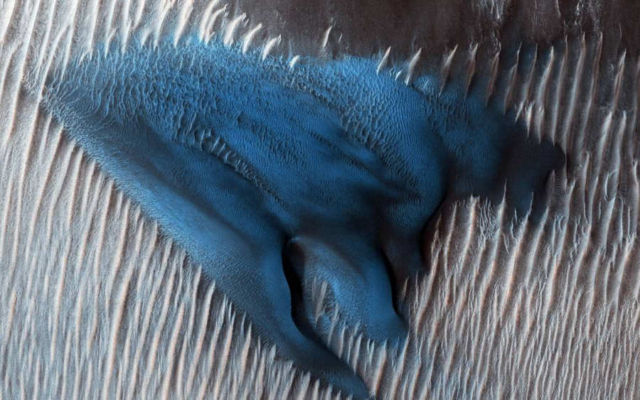This peculiar dune on Mars, appearing like turquoise blue in enhanced color, is made of finer material and/or has a different composition than the surrounding.
Sand dunes often accumulate in the floors of craters. In this region of Lyot Crater, NASA’s Mars Reconnaissance Orbiter (MRO) shows a field of classic barchan dunes on Jan. 24, 2018.
Just to the south of the group of barchan dunes is one large dune with a more complex structure.
The map is projected above at a scale of 25 centimeters (9.8 inches) per pixel. [The original image scale is 34.7 centimeters (13.7 inches) per pixel (with 1 x 1 binning); objects on the order of 104 centimeters (40.9 inches) across are resolved.] North is up.
The University of Arizona, Tucson, operates HiRISE, which was built by Ball Aerospace & Technologies Corp., Boulder, Colorado. NASA’s Jet Propulsion Laboratory, a division of Caltech in Pasadena, California, manages the Mars Reconnaissance Orbiter Project for NASA’s Science Mission Directorate, Washington.
Image credit NASA/JPL-Caltech/Univ. of Arizon
Editor Tony Greicius






Leave A Comment